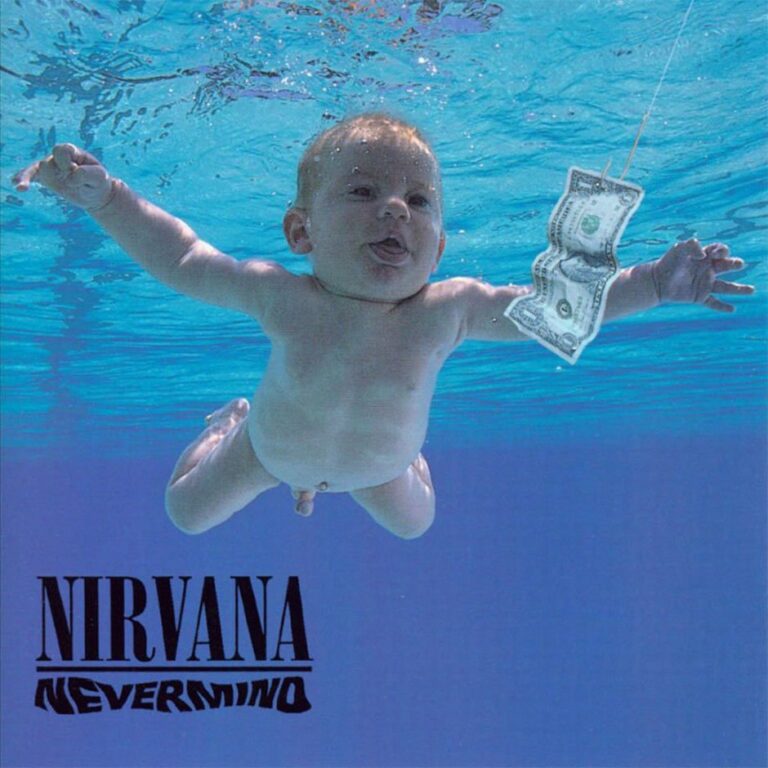
It was originally going to be titled Sheep – singer, guitarist and songwriter Kurt Cobain’s rather wry reference to anyone who might buy the underground Seattle scene post-punk band’s first release on a major label and second album. It was expected if all went well the LP might sell 250,000 copies; gold album sales of half a million would have been considered a whopping success for the band with a bit of a buzz in the alternative rock community but virtually zero mainstream awareness.
Little did Nirvana or their label, the Geffen Records imprint DGC – who the group signed with at the urging of Kim Gordon from Geffen act Sonic Youth – expect that it would eventually sell a reported 30 million LPs worldwide and signal if not kickstart a paradigm shift in rock music.
The trio of Cobain, bassist Kris Novoselic and drummer Dave Grohl had done initial sessions to follow up the band’s first album, 1989’s Bleach on Sub Pop Records, with producer Butch Vig at his Smart Studios in Madison, WI in April 1990. They served as demos that helped them win their new record deal. (Nirvana were unhappy with Sub Pop, and the cash-strapped indie label was hoping a major might buy out the band’s contract.) The bulk of the recordings that yielded Nevermind were done at Sound City Studios in Van Nuys, CA in the San Fernando Valley, again with Vig at the board, in May and June of ’91. In between the two sessions, the band had come up with two new songs: “Smells Like Teen Spirit” and “Come As You Are.”
The release date for Nevermind was September 24, 1991, and the band hit the road. “Smells Like Teen Spirit” had been issued as the first single two weeks earlier. It was not expected to be a hit. But the response at modern rock and college radio stations was enthusiastic. MTV debuted the video on its late night alternative show “120 Minutes” but soon shifted the clip to regular rotation and put the video in its Buzz Bin.
By January 11, 1992, “Smells Like Teen Spirit” had reached #6 on the Hot 100 and Nevermind hit #1 on the Top 200, knocking Michael Jackson’s Dangerous out of the top slot. The album had already been certified platinum for sales over a million the previous November. None of the rapid success had been the result of any label promotion plans, Geffen Records president Ed Rosenblatt told The New York Times, “We didn’t do anything. It was just one of those ‘Get out of the way and duck’ records.”
Related: Rosenblatt discusses signing John Lennon to Geffen
Nevermind‘s impact would elevate Cobain, Novoselic and Grohl from a promising Pacific Northwest cult band to one of the most successful and influential artists of all time.
Nirvana had become superstars and grunge music soon became the last big rock music movement (to date). Only a little over two years later, Kurt Cobain’s death on April 4, 1994, sealed the band’s stature as rock legends.
Nevermind features one of the most iconic album covers of all-time. The baby on its cover is Spencer Elden, whose parents received a fee of a reported $200. In September 2016, he told the New York Post: “It’s cool but weird to be part of something so important that I don’t even remember.”
In 2021, he had changed his story, and sued the band, claiming his parents had never signed a release to allow the image to appear on the cover. He insists that he “has suffered… lifelong damages” from the unwanted exposure.
Here’s an interview he did about growing up as “the Nirvana baby.”
The album’s 30th anniversary in 2021 was celebrated with several multi-format reissues. A total of 94 audio and video tracks–70 previously unreleased–were made available across configurations. Nevermind was newly remastered from the original half-inch stereo analog tapes to high-resolution 192kHz 24-bit.
All four newly remastered live shows are included in the Nevermind Super Deluxe Editions, which is available on both CD + Blu-ray, as well as a massive 8-LP set.

